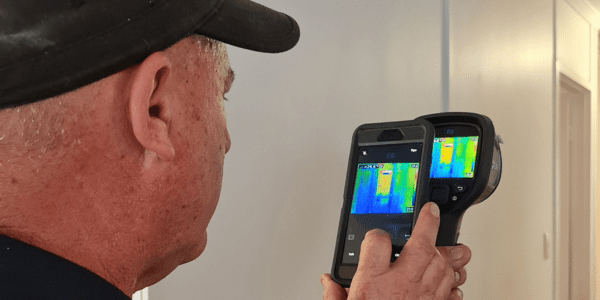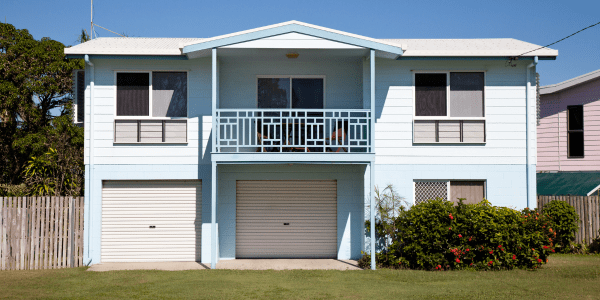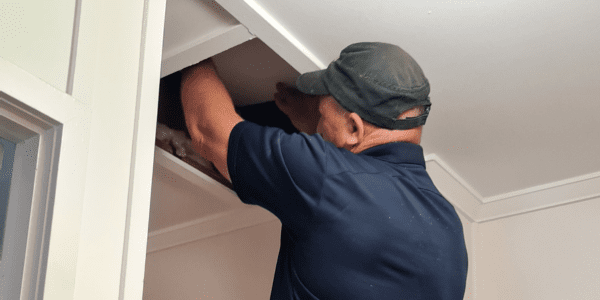How to Read Building and Pest Reports for New Homeowners
Negotiate your new home purchase with confidence
Purchasing a new home is an exciting but daunting venture, especially when it comes to understanding the condition of your potential new home. One of the most critical steps in the home-buying process is reviewing the building and pest reports. These documents can be a goldmine of information or a confusing mishmash of technical jargon. Fear not, in this blog we'll take you through how to read building and pest reports and how to make the most of them to ensure your new home doesn’t turn into a nightmare of unforeseen repairs and infestations.
Understanding the Purpose of Building and Pest Reports
Building and pest reports act as a comprehensive health check for any property under consideration for purchase. Carried out by experienced professionals, these inspections delve into aspects of the home that may not immediately visible to the untrained eye, spotlighting potential issues that could later translate into costly repairs.
The building portion of the inspection looks for major building defects, safety hazards and other minor building defects that require maintenance. Meanwhile, the timber pest inspection is specifically tailored to uncover signs of current termite activity or areas at risk for future termite problems. Termites pose a significant threat to the structural integrity of wood-based structures, making their early detection crucial. These pests can cause extensive damage before any visible signs appear, hence the importance of a thorough pest report.
By providing detailed insights into these two critical aspects of a property's condition, building and pest reports empower potential buyers with the knowledge needed to make an informed purchasing decision. They highlight not just the present state of the property, but also illuminate any necessary interventions that may be needed to safeguard the property's value and livability over time.
Deciphering the Language of Building Reports
Navigating through the terminology used in building reports can initially seem overwhelming, with various technical phrases and industry-specific terms. However, a basic grasp of this language can significantly enhance your understanding of the report's findings.
For instance, phrases like "structural integrity" refer to the strength and sturdiness of the property’s construction, essential for long-term safety and stability. "Dampness" is another term often encountered, indicating unwanted moisture that could lead to mold growth or structural damage if unchecked. Similarly, "termite activity" denotes current infestations within the property, a critical concern for wood-framed houses. Understanding these terms allows you to assess the severity and implications of each listed issue. Additionally, the phrase "serviceable condition" suggests that a component or system within the house, such as the kitchen, is functioning as expected but may require monitoring or future maintenance.
By familiarizing yourself with this language, you can transform the building report from a confusing document into a clear roadmap of the property's condition. This ultimately equips you with the insight to ask informed questions and make educated decisions regarding your potential new home. This knowledge not only aids in comprehending the present state of the property but also prepares you for discussions with inspectors, contractors, or negotiation talks, ensuring you’re not at a disadvantage due to a lack of understanding.
Identifying Key Sections in Building and Pest Reports
Within the detailed landscape of building and pest reports, certain segments emerge as particularly crucial for potential homebuyers. The executive summary or overall assessment stands out for its review of the property's condition, offering an overview of significant concerns. This segment is invaluable for quickly grasping the gravity of any issues. Diving deeper, the report breaks down specific areas of the house such as the roofing, site, exterior, and interiors—each scrutinized for defects. Each section contains comprehensive details on the present status of defects and recommendations for repairs.
In the realm of timber pest inspection, the focus sharpens on evidence of termite activity, documented damage, and vulnerability to future invasions. This section is critical, as it unmasks the silent assailants that could compromise the structural integrity of your future home. Additionally, moisture levels within the property receive a thorough examination, as moisture problems lead to both structural damage and termite infestations. Paying special attention to these segments equips buyers with an understanding of the property's condition.
Armed with this knowledge, you are better positioned to navigate the subsequent steps, whether it involves further investigation, engaging in negotiations, or planning for remedial actions. It is this deep dive into the specifics that transforms a general inspection into a pivotal decision-making tool, guiding you through the complexities of homebuying with clarity and confidence.
What to Do with Red Flags in Your Reports
Upon discovering red flags within your building and pest report, it's crucial to remain calm and methodical in your approach. These concerns, such as significant structural flaws, active termite presence, or persistent moisture issues, require further investigation. Begin by referring to the major and minor defect list at the beginning of the report as a way of understanding the flagged issues according to their severity. Some may be minor and easily rectifiable, whereas others could significantly impact the property's liveability and safety.
Engaging with professionals is a vital next step. Consulting a structural engineer or a pest management specialist can provide an accurate assessment of the problem, offering insight into the complexity of the issue, potential solutions, and the associated costs for repairs or treatment. This professional input is invaluable for understanding the full scope of what you're facing and for planning your next move.
This phase of evaluation is not just about identifying problems but also about strategically planning how to address them. It might involve obtaining detailed quotes for repair work, which can then serve as a basis for further discussions with the seller.
Leveraging Building and Pest Reports in Negotiations
When faced with significant findings from building and pest reports, these insights can transform into serious leverage during the negotiation phase of your home purchase. The discovery of issues such as major building defects or timber pest infestations can serve as a strong basis for renegotiating terms with the seller. Armed with detailed information about the condition of the property, you can effectively argue for a reduction in the purchase price to account for the anticipated cost of necessary repairs or treatments. This strategy enables you to align the investment more closely with the property's true value, considering its current state.
Furthermore, another approach is to request that the seller undertakes the required repairs as a condition of the sale. This request should be backed by estimates from reputable professionals to ensure that all parties have a clear understanding of the scope and cost of the work needed. By presenting these findings and estimates during negotiations, you emphasize the importance of resolving these issues before proceeding, ensuring that the property meets your expectations in terms of safety and quality.
It's imperative during these discussions to maintain a balance between firmness and flexibility, recognizing that negotiation is a process of give and take. Demonstrating a willingness to work towards a mutually beneficial solution can often lead to more favorable outcomes for both parties. Leveraging building and pest reports in this way not only safeguards your interests but also facilitates a smoother transition towards finalizing your home purchase.
Planning for Future Maintenance Based on Report Findings
In addition to being a valuable tool for negotiations, building and pest reports are also a great starting point for understanding and planning future property maintenance and care. Recognizing the importance of addressing not only the current issues identified but also preventing potential future problems is key to safeguarding your investment over the long haul.
A strategic maintenance plan should prioritize areas flagged for attention in the reports, whether it's ensuring that the property's structural integrity is maintained, mitigating risks of future pest infestations, or managing moisture levels to prevent damage. Identifying these priorities allows you to allocate resources effectively, scheduling necessary repairs or preventive measures promptly to avoid the escalation of minor issues into major, costly repairs.
Moreover, these reports can help in planning routine checks and maintenance activities. For instance, if the pest report highlights areas susceptible to termite activity, setting up regular timber pest inspections becomes a critical preventive measure. Similarly, if the building report identifies certain areas prone to wear and tear or potential moisture ingress, these become focal points for periodic scrutiny and maintenance.
In essence, the detailed findings of building and pest reports equip homeowners with the knowledge to not only tackle immediate concerns but also to anticipate and plan for the upkeep of their property. This proactive stance on maintenance ensures the longevity and livability of the home, preserving its value and providing peace of mind to the homeowner.
Book your Building and Pest Inpsection today!
At Dedant, all our inspectors are licensed and highly experienced at conducting pre-purchase inspections, annual timber pest inspections and providing termite management solutions. With each inspector having over 30 years of experience within the building industry, you can have peace of mind that your inspection is comprehensive.
We have been servicing Brisbane, Redland Bay, Moreton Bay, Gold Coast, the Scenic Rim, Sunshine Coast, Ipswich and Logan since 2009.
If you have any questions or would like to book, contact us on 07 3807 0122 or via our website.







